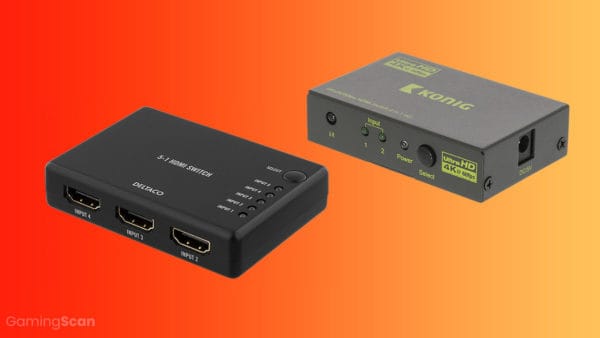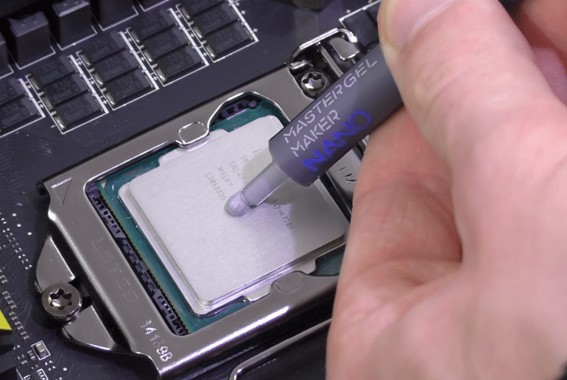If you have just purchased a new monitor or a TV, and you’re confused with all the different connector ports you see at the back of your display – fret not, because we’ll get behind each port and all of its relevant versions.
You’ll know what cables and ports you can or cannot use as well as which one you should use and which one to avoid if you have more options. You will be able to connect your display appropriately in no time and enjoy the best image quality possible.
Table of ContentsShow
HDMI (High-Definition Multimedia Interface)
HDMI is the most versatile and widespread display connector which you can find in most of the modern displays. You’ll find it in all modern TVs, monitors, and graphics cards – but not all of them are equally efficient.
The most common HDMI 1.4 is the most popular for non-4K-capable displays. It can deliver up to 2560×1600 screen resolution at 75Hz as well as 144Hz at 1920×1080, which is very popular amongst competitive PC gamers.
The HDMI 1.3 supports 144Hz at 1080p as well, but the older HDMI versions (from 1.0 to 1.2) max out at 1920×1200 at 60Hz.
Therefore, all of the present-day displays feature at least HDMI 1.4, which boasts multi-channel audio support, can carry Ethernet data, and deliver superior color depth. It can also support 4K resolution, but only up to 30Hz. Moreover, the HDMI 1.4 doesn’t support 21:9 ultra-wide video nor 3D stereoscopic format.
This is where the HDMI 2.0 kicks in, which further expands the color depth and adds smoothness to 4K via 60Hz support. It also adds support for the 21:9 aspect ratio and 3D stereoscopic format. Additionally, the HDMI 2.0 allows for 1440p at 144Hz and 1080p at 240Hz. Both 1.4 and 2.0 versions support the adaptive-sync i.e., AMD FreeSync technology.
HDMI 2.0a adds support for HDR (High Dynamic Range), while HDMI 2.0b features the advanced HDR10 format and HLG standard support.
HDMI 2.1 is scheduled for release in December 2017. It will add support for Dynamic HDR, 4K at 120Hz, and even 8K at 120Hz. The dynamic HDR and the upgraded adaptive-sync technology (FreeSync 2) will work with the existing cables, while for 4K and 8K at 120Hz, you’ll need new 48G cables.
DP (DisplayPort)
Unlike HDMI, DisplayPort can only be found in modern monitors and very rarely in TVs. Nowadays, the DisplayPort 1.2 version is relevant and mandatory for gaming monitors with Nvidia G-Sync variable refresh rate technology. While FreeSync can work with both HDMI and DP (v1.2a), Nvidia exclusively requires the DisplayPort connector.
The effective bandwidth of the DisplayPort 1.2 amounts to 17.28 Gbit/s in HBR2 (High Bit Rate 2) mode allowing for wide color gamut support and high resolution/refresh rates up to 4K at 75Hz. DisplayPort also offers the ability of multiple video streams through daisy-chaining i.e., DisplayPort-Out.
The less widespread DisplayPort version 1.3 increases the bandwidth to 25.82 Gbit/s, which is sufficient for 4K at 120Hz, 5K at 60Hz, and 8K at 30Hz. Via the MST (Multi-Stream Transport), you can daisy-chain up to two 4K UHD displays, or four WQHD+ resolution (2560×1600) monitors at 60Hz.
The latest DisplayPort version 1.4 adds support for HDR10 format and Rec2020 color gamut as well as 8K HDR at 60Hz and 4K HDR at 120Hz by using DSC (Display Stream Compression) encoding with 3:1 compression ratio.
Mini-DisplayPort can be found on certain Apple computers and PC notebooks. These ports support up to 2560×1600 or 4096×2160 resolution depending on the version of the implemented DisplayPort. You can also get mDP to VGA, DVI, or HDMI adapters. Apple’s ThunderBolt connector is backward-compatible with mDP and can be recognized by the small lightning icon on the cable connector.
DVI (Digital Visual Interface)
You can find DVI ports on almost every monitor and graphics cards including those integrated on PC motherboards. There are three different DVI ports: DVI-A for the analog video signal, DVI-D for digital, and DVI-I (integrated) for both. Just like VGA, Single-Link DVI is limited to 1920×1200 at 60Hz.
The main perk of the DVI port is the fact that it is quite widespread and versatile, meaning that you can convert it to both VGA and HDMI by using proper adapters. It’s particularly useful when you need to connect an extra monitor to your computer as it gives you many options if you have limited ports on your GPU or the displays.
Dual-Link DVI ports contain additional pins and can support resolutions up to 2560×1600 at 60Hz and 1920×1080 at 144Hz for gaming. Although most of the DVI connectors can’t transfer sound, some newer GPUs will allow for DVI to output sound. In comparison to the HDMI 1.4, the DVI port has inferior color gamut and overall performance. So, if you can, use the HDMI instead of DVI.
VGA (Video Graphics Array)
VGA, also frequently referred to as ‘D-Sub’ connector, carries analog video signals which should be avoided. Though VGA can easily support 1920×1200 resolution at 60Hz – if you have the opportunity, use a DVI-D or an HDMI port instead. For multi-monitor setups, it will do the work if you have no other options. In fact, the difference in the image quality is practically invisible, but other factors can cause some inconvenience such as cable length, digital conversion, wire gauge, etc.
Conclusion
Keep in mind that 1920×1080 screen resolution at 60Hz, for example, will look exactly the same no matter whether you’ve connected your display via the DVI-D, DisplayPort, or HDMI port. So, the image won’t get nicer even if you use better and more expensive cables (excluding VGA).
Therefore, use the cables that come included with your graphics card or display, and before getting a new cable or adapter, check whether both of your devices support the resolution/refresh rate you’re trying to achieve.




